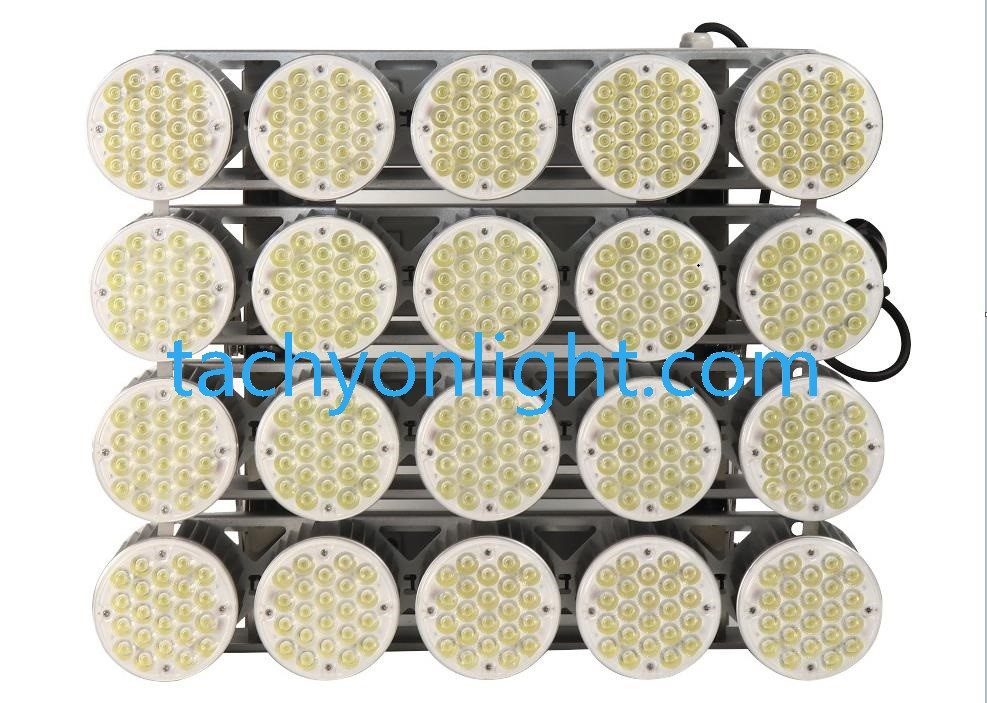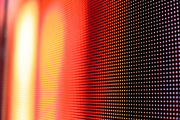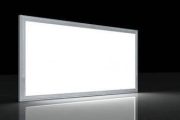the Problem of Heating
Like traditional light sources, semiconductor light-emitting diodes (LEDs) also generate heat during operation, the amount of which depends on the overall luminous efficiency. Under the action of external electric energy, the radiation of electrons and holes recombine to produce electroluminescence. The light radiated near the PN junction also needs to pass through the semiconductor medium and packaging medium of the chip itself to reach the outside (air). Combining current injection efficiency, radioluminescence quantum efficiency, and external light extraction efficiency of the chip, in the end, only 30-40% of the input electric energy is converted into light energy, and the remaining 60-70% of the energy is mainly caused by non-radiative recombination of lattice vibration The form transforms heat energy.
The core part of LED is PN junction. When the PN junction is recombined, electrons and holes directly convert electrical energy into light energy. However, not all the converted light energy can be emitted to the outside of the LED. The absorption board and epoxy/silicone inside the PN junction convert it into heat. This kind of heat has a huge side effect on the lamp. If the heat can not be effectively dissipated, the temperature of the LED will increase with the increase of the internal temperature. The higher the temperature, the lower the luminous efficiency of the LED and the shorter the life of the LED. In severe cases, the LED chip will immediately fail. Therefore, heat dissipation is still a huge obstacle for high-power LED applications.
The influence of heat on the life of LED fixtures
Generally speaking, the stability and quality of LED lamps are critical to the heat dissipation of the lamp body. The high-brightness LED lamps on the market often use natural heat dissipation, and the effect is not ideal. The lamps made by LED light source are composed of light source, heat dissipation structure, driver, and lens. Therefore, heat dissipation is also an important part. If the LED can not dissipate heat well, its life will be affected.
Heat management is the main problem in high-brightness LED applications
Because the p-type doping of group III nitrides is limited by the solubility of the Mg acceptor and the higher starting energy of holes, heat is particularly easy to generate in the p-type region, and this heat must be dissipated on the heat sink through the entire structure; The heat dissipation pathways of LED devices are mainly thermal conduction and thermal convection; the extremely low thermal conductivity of the Sapphire substrate material causes the thermal resistance of the device to increase, resulting in a serious self-heating effect, which has a devastating effect on the performance and reliability of the device.
The effect of heat on high-brightness LEDs
Heat is concentrated in a chip with a small size, and the chip temperature rises, causing uneven distribution of thermal stress, chip luminous efficiency and phosphor lasing efficiency decline; when the temperature exceeds a certain value, the device failure rate increases exponentially. Statistics show that for every 2°C increase in component temperature, reliability decreases by 10%. When multiple LEDs are densely arranged to form a white light illumination system, the problem of heat dissipation becomes more serious. Solving the problem of heat management has become a prerequisite for high-brightness LED applications.
The relationship between chip size and heat dissipation
The most direct way to increase the brightness of the LED is to increase the input power. In order to prevent the saturation of the active layer, the size of the p-n junction must be increased accordingly. Increasing the input power will inevitably increase the junction temperature and reduce the quantum efficiency. The increase of the power of a single tube depends on the ability of the device to extract heat from the pn junction, while maintaining the existing chip material, structure, packaging process, current density on the chip and equivalent heat dissipation conditions, the size of the chip and the junction area are increased separately The temperature will continue to rise.
Method of heat dissipation
Aluminum fins
This is the most common way to dissipate heat. Aluminum fins are used as part of the housing to increase the heat dissipation area.
Thermally conductive plastic shell
The use of LED insulating and heat-dissipating plastic instead of aluminum alloy to make the heat sink can greatly improve the heat radiation capacity.
Surface radiation treatment
The surface of the lamp housing is treated with radiant heat. The simple method is to apply radiant heat dissipation paint, which can radiate the heat away from the surface of the lamp housing.
Aerodynamics
Using the shape of the lamp housing to create convective air, this is the lowest cost way to enhance heat dissipation.
fan
Long-life and high-efficiency fans are used inside the lamp housing to enhance heat dissipation, with low cost and good effect. However, it is more troublesome to change the fan, and it is not suitable for outdoor use. This design is relatively rare.
Heat pipe
Using heat pipe technology, heat is conducted from the LED chip to the heat dissipation fins of the housing. In large lamps, such as street lamps, etc. are common designs.
Liquid bulb
Using liquid bulb packaging technology, a transparent liquid with high thermal conductivity is filled into the bulb of the lamp body. This is the only technology that uses the light-emitting surface of the LED chip to conduct heat and dissipate heat in addition to the principle of light reflection.
The use of lamp holder
In household-type low-power LED lamps, the internal space of the lamp holder is often used to partially or completely insert the heating drive circuit. In this way, a lamp cap with a larger metal surface like a screw cap can be used to dissipate heat, because the lamp cap is closely connected to the metal electrode of the lamp holder and the power cord. Therefore, a part of the heat can be radiated from this.
Heat conduction and heat dissipation
The purpose of the heat dissipation of the lamp housing is to reduce the working temperature of the LED chip. Because the expansion coefficient of the LED chip is very different from the expansion coefficient of our commonly used metal heat conduction and heat dissipation materials, the LED chip cannot be directly welded to avoid high and low temperature thermal stress to damage the LED chip. The latest high thermal conductivity ceramic material, the thermal conductivity is close to aluminum, and the expansion system can be adjusted to synchronize with the LED chip. In this way, heat conduction and heat dissipation can be integrated, reducing the intermediate links of heat conduction.
Breakthrough in Heat Dissipation Technology
Existing heat dissipation technology:
101 is heat dissipation aluminum profile;
102 is thermal conductive silicone gasket / silicone grease;
103-106 is aluminum plate, 104 is insulation layer, 105 is copper coating layer, 106 is solder mask;
201-204 is electrode, 202 is led base, 203 is PN junction of LED, 2 04 is silica gel, and then solder the led to the copper coating on the aluminum substrate.
Since the heat dissipation bottleneck of LED lamps is the insulation layer on the aluminum substrate, the following new processing technology can be used to process the aluminum substrate for the LED with heat and power separation, which can greatly enhance the heat dissipation capacity of LED lamps , drill holes to remove the copper layer and insulation layer under the original LED base of the aluminum base plate, and expose the aluminum plate.
However, aluminum can not be directly soldered, but also needs to be plated on the exposed aluminum plate with tin metal layer. After repeated research, discussion and processing verification, the following processing technology is adopted: firstly, zinc is deposited on the exposed aluminum plate, then nickel is plated on the zinc surface, then copper is plated on the nickel, and finally tin or gold is sprayed on the copper. The coating processed in the above processing sequence has strong adhesion and conductivity Good thermal performance, after the above plating process, LED can be welded on the aluminum plate.
The heat from the PN junction of the LED is scattered in the air through the LED base, solder paste welding layer, copper coating, insulating layer, aluminum plate, thermal conductive silicone gasket / silicone grease, heat dissipation aluminum profile, in order to complete the heat dissipation process.
- Break through the problem of unsatisfactory heat dissipation of the existing finned aluminum radiator
Most of the existing LED lamps use finned aluminum as a heat sink, and the heat dissipation effect of this type of heat sink is not ideal, and the heat sink usually reaches a higher temperature.
- Use insulating heat-dissipating plastic instead of aluminum alloy to make heat sink
South Korea has developed a kind of LED bioconducting plastic in 2009, which can increase the heat radiation capacity by 4-8 times while keeping the heat dissipation capacity equal to that of aluminum alloy. The LED heat sink made of this heat dissipation material can greatly improve the overall heat dissipation effect.
- Adopting the principle of liquid convection to provide a LED lamp with good heat dissipation performance
Utilize the heat absorbed from the lampshade by the coolant in the liquid storage tank installed on the lampshade, and at the same time use the natural convection of the coolant between two liquid storage tanks with different heights to dissipate the heat absorbed by the coolant from the lampshade , So that the lamp body of the led lamp is well cooled.
- Can be flexibly rotated, easy to install
Since the cooling liquid convection tube connected between the two liquid storage tanks has a bellows structure, and the bellows structure can be stretched and bent, it will not hinder the flexible rotation of the lampshade and is also convenient for installation.







